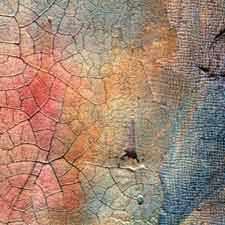We run our website the way we wished the whole internet worked: we provide high quality original content with no ads. We are funded solely by your direct support. Please consider supporting this project.
The Witness of Graffiti (Rocks Crying Out)
On this eve of Easter, we wanted to share something that fit the mood of the time between the crucifixion and the resurrection. D.L. Mayfield wrote this striking piece on the longing for the Kingdom of God in the midst of overwhelming brokenness. We thought it was the perfect reflection for this day suspended between grief and celebration.
From her reflection:
I think Jesus meant it all: that his coming, his way, his kingdom was marked both by celebration and anguish. He knew, more intimately and more deeply than we could ever imagine, the joy of his father’s heart and the suffering of what happens when we purposefully thwart it. He knows about me, my neighbors, this city—how the redemption is so real and good and possible (the rocks cry out) and how the hearts of the broken are barely holding on, while we keep trying to build our own safe fortresses high above the muck (the rocks cry out). He knows it all; and perhaps this is what he was thinking as he looked over Jeruslalem and wept.
In my neighborhood you can’t walk a block without seeing paint splashed on the walls. Some are joyful, hopeful and prophetic. Others are chilling, territorial, anguished. The rocks are crying out, just as Jesus said they would.
Related Reading

Jesus and those “Other People”
Adele Booysen via Compfight Nicky Marshall is the husband of one wife (Raquel), father or two boys (Nathan and Elijah) and serves as assistant pastor at The Living Room Church in Barbados. Nicky is also an Artist and Surfer. He blogs here. “This is Ferozah”. I instinctively stuck my hand out to greet a smiling Muslim…

Don’t Be a Functional Atheist at Christmas
All of us raised in Western culture have been strongly conditioned by what is called a secular worldview. The word secular comes from the Latin saeculum, meaning “the present world.” A secular worldview, therefore, is one that focuses on the present physical world and ignores or rejects the spiritual realm. To the extent that one…

Crucifixion of the Warrior God Update
Well, I’m happy to announce that Crucifixion of the Warrior God is now available for pre-order on Amazon! Like many of you, I found that the clearer I got about the non-violent, self-sacrificial, enemy-embracing love of God revealed in Christ, the more disturbed I became over those portraits of God in the Old Testament that…

What is the Kingdom of God (Part 1)
We all know what the Kingdom of God is, right? But this is precisely the problem. Since we are all to a large extent products of our culture, what seems obviously true and right to us will be at least influenced, if not determined, by what seems obviously true and right to our culture. This,…

The God Who Embraces Our Doubt
Lawrence OP via Compfight Zack Hunt over at The American Jesus posted some of his thoughts on doubt, and it seemed fitting on this week before the Doubt, Faith & the Idol of Certainty conference to share what he had to say. We’re thinking he must have stumbled on Greg’s book or maybe God is…

What Kind of God Did Jesus Reveal?
The ReKnew Manifesto exists to encourage believers and skeptics alike to re-think things they thought they already knew – hence our name, Re-Knew. I am currently working through the theology of the Manifesto in a series of posts that began a couple of months ago. Over the last few posts, we have been looking at the…

